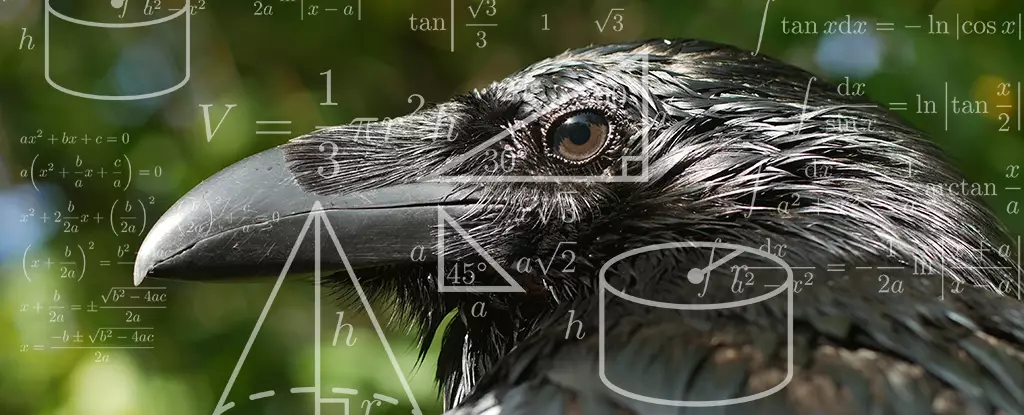Recent research has unveiled a stunning revelation about crows, suggesting that these often-overlooked birds possess geometric intuition comparable to that of humans. In a world where intelligence is measured through complex problem-solving abilities, it is easy to dismiss non-human animals as incapable of abstract reasoning. However, studies examining the cognitive skills of crows challenge this notion, highlighting that these feathered creatures have an innate affinity for geometric regularity. One might argue that this revelation is a bittersweet reminder of how we underestimate the cognitive capabilities of other species.
The Fascinating Study
Conducted by a team led by Andreas Nieder at the University of Tübingen in Germany, the study demonstrated that carrion crows (Corvus corone) can recognize an anomalous shape among a group of geometric figures. Through a series of trials involving two male crows, researchers tested the birds’ ability to identify an “odd one out” in a set of quadrilaterals. The crows’ validation of the presence of a singular outlier shape, after their lack of prior exposure to such tasks, speaks volumes about the cognitive skills they inherently possess. This trial involved presenting crows with varying degrees of geometric regularity while monitoring their pecking responses—an exercise in both discernment and spatial awareness.
The Deep Roots of Intuition
What makes this discovery so profound is not merely the fact that crows can perform these tasks, but rather the implication that geometric recognition may be far more common in the animal kingdom than previously thought. As evolutionary biology continues to unlock mysteries of cognitive development across species, this insight illuminates a crucial aspect of environmental interaction that might be a common thread among many creatures. It raises an important question: could our understanding of geometry, thought to be a quintessentially human trait, actually be a shared characteristic deeply rooted in evolutionary history?
Beyond the Lab: Real-World Applications
Crows don’t just engage in theoretical exercises; their remarkable geometric abilities have practical implications for their daily survival. These birds use spatial recognition for orientation and navigation, which aids them in foraging, escaping predators, and making educated decisions in their environments. Thus, the ability to differentiate between shapes is not just an academic accomplishment; it is a vital skill that enhances their survival prospects. This points to an essential truth: intelligence, regardless of its form, serves an evolutionary purpose.
Framing a New Narrative
Despite the revelations about crows and their geometric prowess, society remains largely disconnected from the intelligence of non-human animals. Such findings often provoke a sense of unease: if we must reassess our hierarchy of intelligence, what does that say about our own self-importance? The recognition of geometric intuition in crows should act as a clarion call for a more profound appreciation of animal cognition. Instead of placing ourselves atop a misguided pedestal, it compels us to reassess our relationship with the natural world and to embrace a more egalitarian perspective on intelligence and sentience.
The Implicit Challenge
Nieder’s research underlines the embarrassing contrast between human and animal understanding of geometry. On one hand, we take pride in our advanced analytical skills, yet we often overlook the fact that other species like crows have an intuitive grasp of these concepts. This paradox begs the question: Are we, in our hubris, dismissing a rich tapestry of intelligence that thrives beneath our noses? As beings with the capability to reflect upon our existence, it is time to challenge preconceived notions and foster an understanding that transcends human-centric attitudes.
In a world where metrics of intelligence often prioritize the human experience, research like this emphasizes the necessity of redefining standards. Understanding the innate capabilities of creatures like crows serves as a sobering reminder of the various forms intelligence can take. The implications of such studies stretch far beyond the avian world; they challenge us not only to acknowledge but to celebrate the complex cognitive landscapes that exist beyond our narrow lens.


Leave a Reply